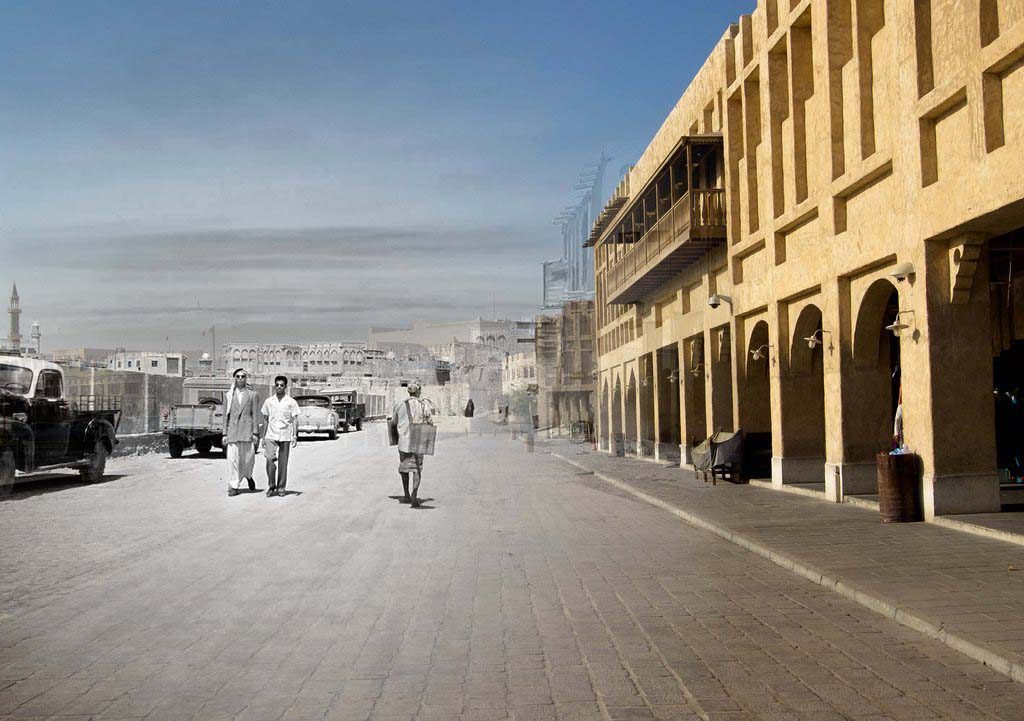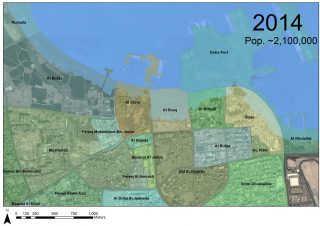
How did you get to school? Where did you get water and food? Who were your neighbors?
These are some of the questions researchers want to pose to Doha residents of all ages as they embark on a new initiative to chart the changing face of Doha from the 1950s and 1960s to the present day.
‘Where Is Your Doha?’ is a study being led by University College London (UCL) Qatar, as part of its ongoing Origins of Doha Project.
Researchers want to delve into people’s memories of life in the city over the past 70 years, and attempt to show not only how Doha has developed and expanded, but also how this affected the everyday lives of people in the city at the time.
The team is using modern mapping techniques to digitize early information and statistics about Doha, to show how the city has grown, and also how neighborhoods have changed – with some expanding, others getting swallowed up by their neighbors, or just changing their name.
For example, an overlay of maps from the 1950s and ’60s shows how some districts have changed completely. Salata was once a peninsula jutting out into the bay of Doha, but it’s now entirely land-bound, following the reclamation of land from the sea to build other neighborhoods around it.
The initiative is part of a wider project, The Origins of Doha, which UCL is undertaking in collaboration with Qatar Museums Authority experts to unlock the secrets of Doha’s past.
The team is now half-way through the three-year project, which has been supported with $876,000 from the Qatar National Research Fund, part of Qatar Foundation.
First-hand accounts
Researchers are keen to enhance the information they’re gathering with first-hand accounts from Doha residents.
Although the team will primarily focus on the 1950s and 1960s, recollections from other decades are also welcome.
Residents past and present can post their memories, in Arabic or English, on the project’s dedicated Facebook page.
This information will complement a series of in-depth interviews the Qatari and international researchers will undertake over the next 18 months with around 20 people who lived in Qatar during the mid-20th century.
Lead researcher Dr. Robert Carter, senior lecturer in archaeology at UCL Qatar, told Doha News that the aim of the project was to get personal, oral history accounts of Doha’s districts:
“We want to know the boundaries of the different districts and to hear what people called them – this might be different to their official names.
We also really want to know what it was like living there. We would really like to hear people talk about their memories of their childhoods and community at the time.”
He added that the information will help archaeologists, historians and ethnographers to better understand how people adapted to Doha’s growth over the centuries, including the pearl boom, the subsequent recession, and then the coming of oil and gas.
“We are interested in people’s perceptions of the changes that surrounded them,” Carter said.
Mapping communities
The team is also mapping information which shows how houses, mosques, wells, and graveyards related to the communities around them.
This will enable them to try answer questions like why, for example, one large district only had one mosque, while another had four or five.
Carter describes this process as examining “the anatomy” of the city.
Researchers are also developing rotating 3-D maps of the city, showing projections from different angles through time.
For example, the Facebook page features a 1956 map, based on British government data, and compares it to a 2010 map created by the Ministry of Municipality, showing changing neighborhood boundaries. These maps have already provoked discussion among residents, one of whom comments:
“I live in Ain Khalid, but back in the day if you drove that far, you thought you were in the Saudi border!”
Archaeological digs
This latest initiative is in addition to archaeological work undertaken in the oldest parts of Doha, around Souq Waqif and the Msheireb area by experts from UCL Qatar and Qatar Museums Authority (QMA) during last winter.
The digs aimed to reveal what everyday life in Doha was like in the 19th Century.
Among the items unearthed so far from a seven-acre site adjacent to the Fanar Islamic Cultural Center are keys, coins, jewelry, a dhow anchor and pottery estimated to be roughly 150 years old.
It’s hoped that many of the team’s findings will eventually be displayed in the city’s National Museum, which was expected to be completed at the end of this year but is still under construction.
Thoughts? What are your memories of Doha’s past?










